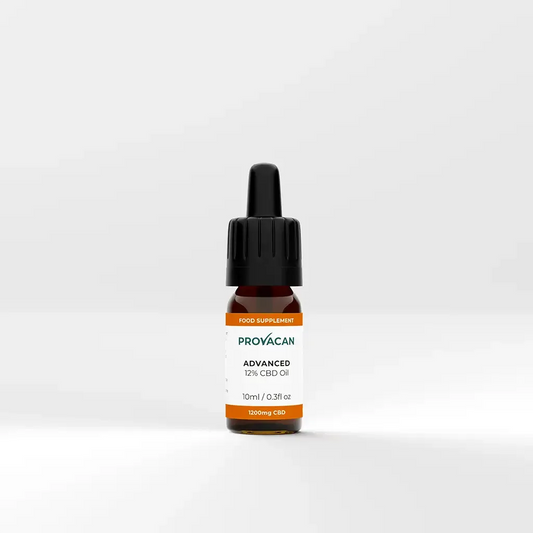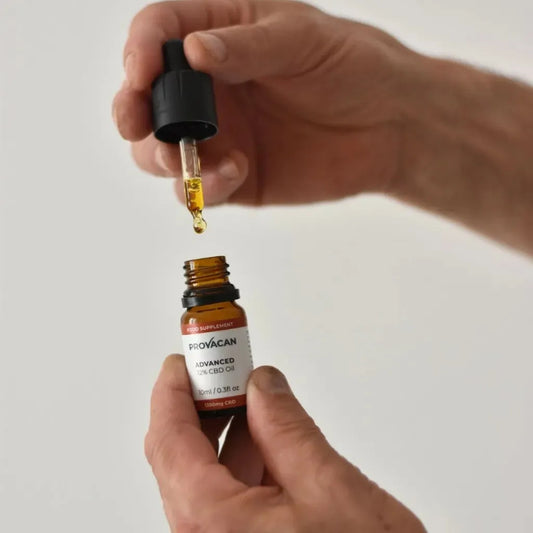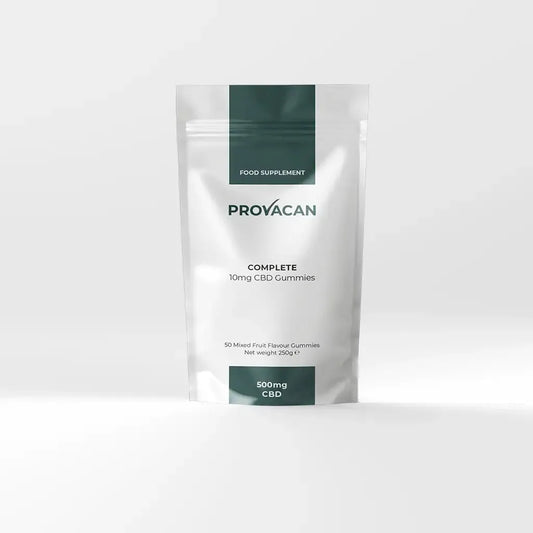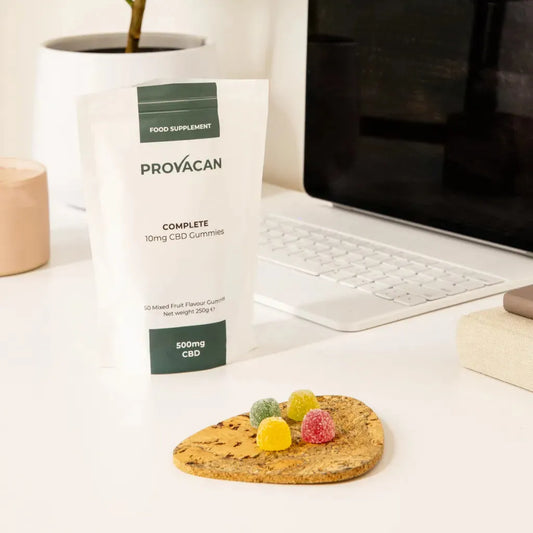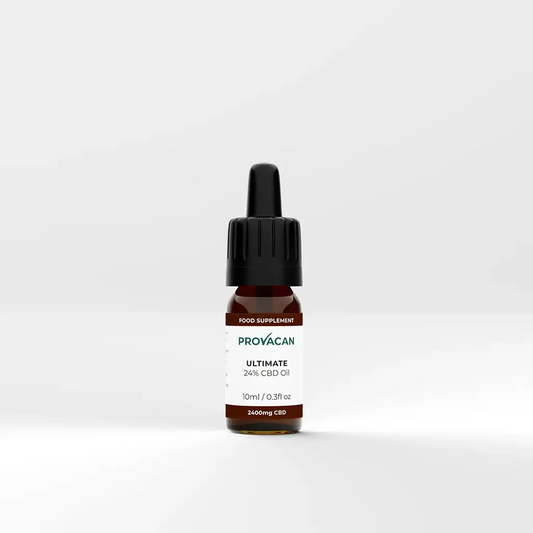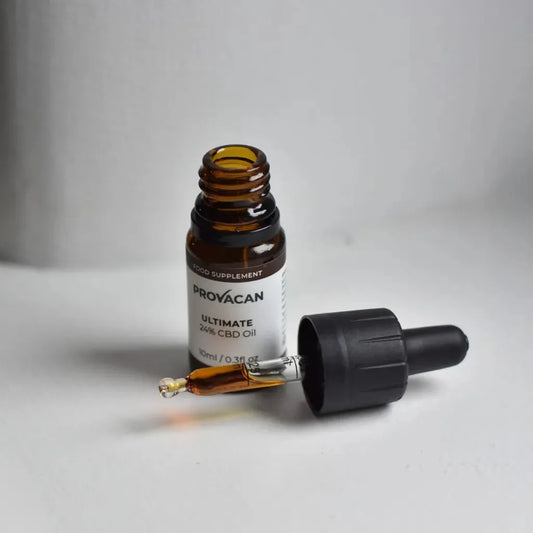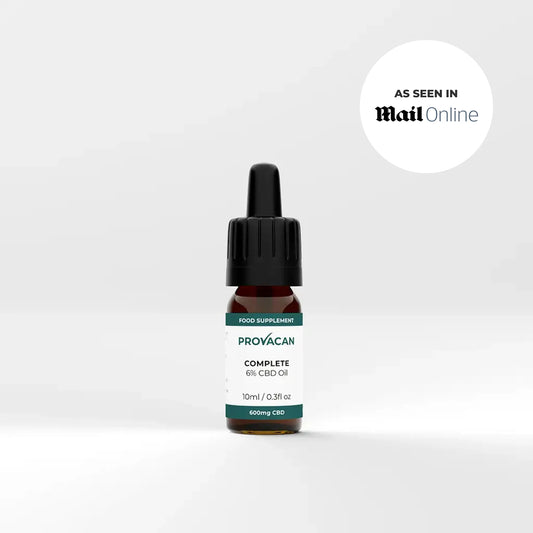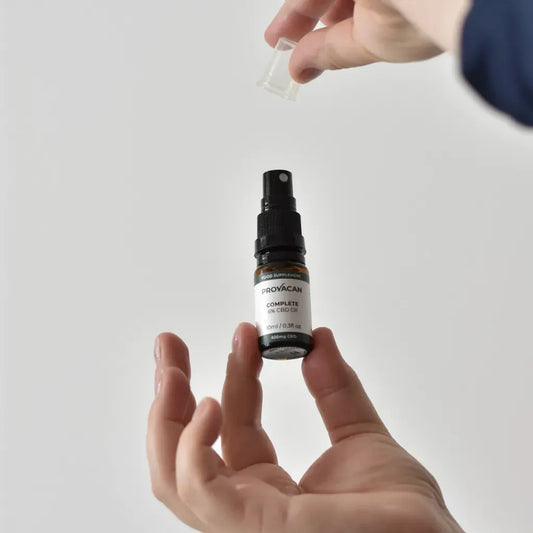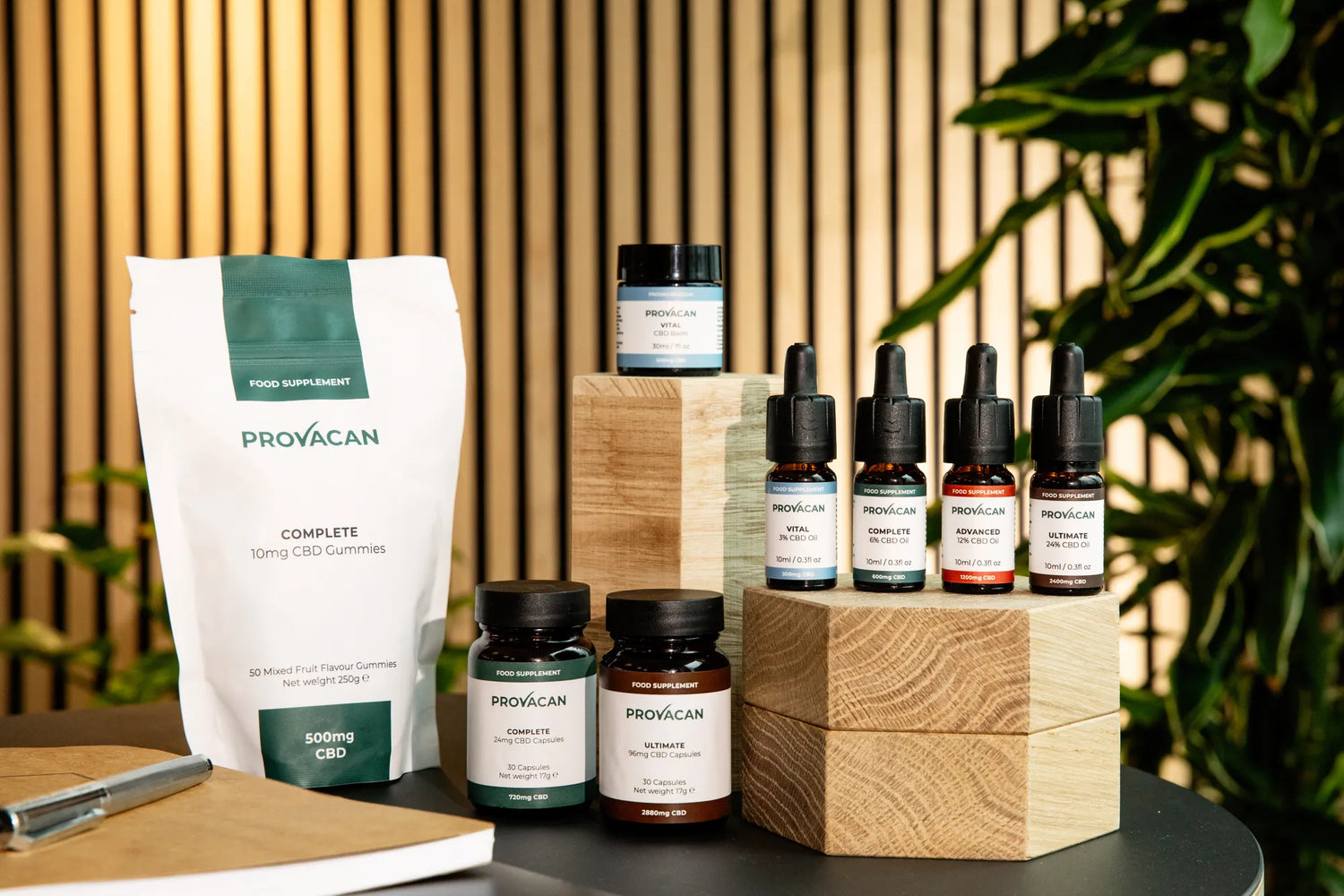Key takeaways:
- Factors influencing CBD absorption: Understanding the factors influencing CBD absorption can significantly enhance its efficacy, with the method of consumption, quality of product, and individual biology playing crucial roles.
- CBD bioavailability: Bioavailability is key to effective CBD use, with different consumption methods influencing how much CBD enters the bloodstream and contributes to its effectiveness.
- Consistent CBD dosing: Timing and consistency in CBD dosing are essential for optimal results, aligning with Provacan’s dedication to enhancing wellness through scientific advancements.
The outcome is up to you.
In the pursuit of wellness, CBD promises real hope for many people, offering a natural way to support health and wellbeing.
At Provacan, we’re committed to your wellbeing, standing at the forefront of delivering unmatched CBD quality that promises and delivers. With the burgeoning popularity of CBD across the United Kingdom and beyond, consumers are increasingly eager to understand how to maximise its effectiveness.
In this guide, we’ll examine substantiated techniques and strategies to enhance CBD's bioavailability, ensuring you gain the most out of your CBD experience.

Understanding CBD and its potential benefits
Cannabidiol, or CBD, a compound found in hemp and cannabis plants, has rapidly come to the forefront of modern wellness conversations. Its popularity can be attributed to a burgeoning body of scientific research suggesting various potential health benefits.
CBD interacts with the body’s endocannabinoid system (ECS), a complex network of receptors and neurotransmitters that regulates various physiological processes, including pain sensation, mood, memory, and appetite. By influencing the ECS, CBD may offer therapeutic benefits without the psychoactive effects associated with tetrahydrocannabinol (THC), another well-known compound derived from cannabis.
Research points towards CBD's potential in providing relief and supporting individuals experiencing chronic pain, inflammation, anxiety and depression, and promoting sleep. Its neuroprotective properties are also being investigated, with preliminary studies suggesting benefits for those with neurological disorders, such as epilepsy and multiple sclerosis. Additionally, emerging studies hint at CBD’s potential in supporting heart health by lowering blood pressure and reducing heart damage risks.
Factors affecting CBD absorption
While CBD has garnered widespread acclaim for its myriad potential health benefits, understanding the nuances of CBD absorption can significantly enhance its utility. By considering these aspects, the potency and scope of CBD's benefits can be maximised.
1. Method of administration
CBD can be administered in several ways, including orally, topically, sublingually, and through inhalation. Each method directly impacts the speed and efficiency with which CBD enters the bloodstream, thus affecting its absorption rate. For instance, sublingual consumption (placing CBD oil under the tongue) offers a quicker absorption than oral ingestion (such as CBD capsules or gummies), as the sublingual gland allows CBD to bypass the digestive system and enter the bloodstream more rapidly.
2. Bioavailability
Bioavailability refers to the percentage of CBD that actually enters the bloodstream. Not all consumed CBD reaches systemic circulation due to a breakdown in digestion or metabolic processes. Vaping or smoking CBD provides high bioavailability as the compounds are inhaled directly into the lungs and absorbed into the bloodstream. Conversely, the bioavailability of orally consumed CBD is generally lower because CBD must pass through the liver, where it is metabolised, reducing the concentration that ultimately enters circulation.
3. Quality of CBD
The purity and formulation of CBD products are crucial factors that can significantly influence absorption. Provacan’s emphasis on meticulous extraction methods and precision in formulation ensures the highest quality of CBD. Advanced extraction techniques help preserve the integrity and potency of CBD, facilitating efficient absorption. Inferior-quality CBD, on the other hand, may not only reduce absorption efficiency but could also contain harmful contaminants that impede CBD's efficacy.
4. Food and substance interactions
Certain foods or substances in your system can affect CBD's absorption rate. Consuming CBD with fatty meals can increase its bioavailability, as CBD is fat-soluble, meaning it dissolves better in fat than in water. By integrating with fats, CBD can bypass some of the first-pass metabolism, allowing more of it to reach systemic circulation. On the other hand, certain medications and substances could inhibit or compete with CBD's metabolism, impacting its absorption and effectiveness.
5. Individual factors
Finally, individual biological factors play a notable role in CBD absorption. Metabolism speed, body mass, and genetic predispositions can all influence how efficiently the body absorbs and uses CBD. Understanding how everyone's body responds differently to CBD is critical in adjusting dosages and consumption methods to suit personal wellness goals.
Bioavailability: The key to effective CBD use
Essentially, bioavailability refers to the proportion of CBD that enters the bloodstream and is thus able to exert its effects on the body. Its significance in CBD use cannot be overstated, as it directly influences the product's efficacy.
CBD's bioavailability varies significantly based on the method of delivery. For instance, when CBD oil is taken sublingually (placed under the tongue), it bypasses the digestive system and directly enters the bloodstream through the mucous membranes. This method significantly enhances CBD absorption, making it one of the most efficient ways to administer CBD.
In contrast, when CBD is ingested orally through capsules or gummies, its bioavailability is markedly lower. This is because CBD must pass through the digestive system and the liver, a process known as "first-pass metabolism," which reduces the amount of CBD that ultimately reaches the bloodstream.
Methods of CBD consumption
Understanding the various types/methods of consuming CBD is crucial for enhancing its absorption and, consequently, its effectiveness. Each method offers distinct benefits and rates of bioavailability, affecting how quickly and efficiently CBD is absorbed into the bloodstream.
Oral consumption
One of the most popular methods is the oral consumption of CBD through capsules or gummies. When CBD is ingested, it passes through the digestive system and liver before entering the bloodstream. This process, known as the "first-pass effect," can reduce the bioavailability of CBD, meaning a lower percentage ultimately becomes active in the body. However, the effects of orally consumed CBD tend to last longer, making it an excellent option for those seeking sustained relief.
Sublingual administration
Sublingual administration involves placing CBD oil or tinctures under the tongue for a minute before swallowing. This method allows CBD to be absorbed directly into the bloodstream through the mucous membranes in the mouth, bypassing the first-pass metabolism in the liver. As a result, a higher concentration of CBD reaches the system more rapidly than oral ingestion, leading to improved absorption rates.
Topical application
CBD can also be used topically, applied directly to the skin through balms. This method is particularly effective for localised issues, as the CBD interacts with cannabinoid receptors in the skin. Although topical CBD doesn't enter the bloodstream, it can provide targeted relief at the application site. The absorption through the skin can be slower and vary depending on the skin's permeability and the concentration of CBD in the product.
Inhalation
Inhaling CBD via smoking or vaping provides the most immediate effects, as the compounds are absorbed directly into the lungs and then into the bloodstream. This method boasts the highest bioavailability, with effects typically felt within minutes. However, the long-term health impacts of vaping are still being studied, and this method may not be suitable for everyone, particularly those with respiratory conditions.
Timing your doses for optimal results
First and foremost, consider the form of CBD you are using. Whether it's oils, capsules, gummies, or topicals, the time it takes for CBD to enter your bloodstream and its effects to become noticeable can vary widely. Oils, for example, when taken sublingually (under the tongue), can provide quicker absorption than gummies, which must pass through the digestive system before metabolising.
For those integrating CBD into their daily routine for general wellness, the morning might be the ideal time to take it, especially if paired with breakfast. This becomes a convenient habit and takes advantage of the fact that CBD can interact with the body’s natural circadian rhythms. For individuals seeking to enhance sleep quality, taking CBD in the evening, approximately an hour before bedtime, can be more beneficial.
It's also worth noting that consistency is key. Maintaining a regular schedule for taking CBD not only aids in better absorption but also supports sustained levels in your system, allowing your body to make the most of its therapeutic potential. Moreover, listening to your body and adjusting the timing based on personal experience can optimise your benefits and results. Splitting their dosage between morning and evening provides a more balanced effect throughout the day.

Final thoughts
Maximising CBD absorption is pivotal in harnessing this potent compound's full spectrum of benefits. Through mindful practices and informed choices — such as selecting high-quality CBD products, considering the method of administration, and integrating CBD into a conducive lifestyle — individuals can significantly improve how well their bodies utilise CBD. At Provacan, our commitment to your wellbeing is reflected in our relentless pursuit of excellence and innovation in CBD solutions.
Following the guidance shared in this article and choosing Provacan's scientifically-backed CBD products is investing in a superior CBD experience. Remember, the key to unlocking CBD's full potential lies in absorption, and with the right approach, you can achieve an optimal state of wellness that resonates with your body's unique needs.
Read Also:
Frequently asked questions on better absorption of CBD
What is CBD?
CBD, or cannabidiol, is a natural compound found in the cannabis plant. Unlike its cousin THC, CBD does not have psychoactive effects, meaning it won't get you high. Instead, it’s celebrated for its potential wellness benefits, including supporting lower anxiety, promoting sleep, and providing relief without intoxication.
How does CBD work in the body?
CBD interacts with the body's endocannabinoid system (ECS), a complex network of receptors and neurotransmitters that play a key role in maintaining homeostasis. The ECS regulates various physiological processes, including mood, sleep, appetite, and pain. CBD is thought to augment the ECS by enhancing the body's natural response to pain, anxiety, and stress.
What factors affect CBD absorption?
Several factors can influence how well CBD is absorbed into the bloodstream. These include the concentration of CBD, the method of consumption, the presence of other substances (like fats, which can enhance absorption), individual metabolism, and overall health. Understanding these factors can help users optimise their CBD intake for better results.
Can the method of consumption impact CBD’s effectiveness?
Absolutely. CBD can be ingested orally, inhaled, applied topically, or taken sublingually (under the tongue). Each method has its own absorption rate and onset time. For instance, sublingual application and inhalation typically allow for faster absorption and quicker effects, whereas oral consumption may have a delayed onset but potentially longer-lasting effects.
Does the quality of CBD matter for absorption?
Yes, the quality of CBD significantly affects its absorption and effectiveness. High-quality CBD products, like those offered by Provacan, ensure superior purity and potency, improving the likelihood of better absorption and effectiveness. Low-quality products may contain impurities or lower concentrations of CBD, reducing their efficacy.
What are the best ways to take CBD for maximum absorption?
For optimal absorption, consider the sublingual method or via inhaling CBD. These methods allow CBD to enter the bloodstream more directly, leading to quicker and more efficient absorption. Combining CBD with fats or taking it with food can also enhance absorption when ingesting CBD orally.
How can you tell if CBD is high quality?
High-quality CBD products typically come with a certificate of analysis (COA) from a third-party laboratory. The COA provides detailed information on the product's cannabinoid content and purity levels, confirming the absence of contaminants. Brands like Provacan, which emphasise transparency and rigorous testing, assure product quality and potency.
What is bioavailability and why is it important for CBD?
Bioavailability refers to the proportion of a substance that enters the bloodstream when introduced into the body and can have an active effect. For CBD, higher bioavailability means more of the compound can exert its potential benefits. Different consumption methods offer varying bioavailabilities, affecting how much CBD can influence the body. Understanding bioavailability helps users choose the most effective ways to take CBD for their wellness goals.
Sources:
- Khondker Rufaka Hossain, et al. Current Challenges and Opportunities for Improved Cannabidiol Delivery. (n.d.). National Center for Biotechnology Information. Retrieved from https://www.ncbi.nlm.nih.gov/pmc/articles/PMC10572536
- Saoirse Elizabeth O’Sullivan, et al. Strategies to Improve Cannabidiol Bioavailability and Drug Delivery. (n.d.). National Center for Biotechnology Information. Retrieved from https://www.ncbi.nlm.nih.gov/pmc/articles/PMC10892205
- YingLan Nie, et al. Enhanced Oral Bioavailability of Cannabidiol by Flexible Zein Nanoparticles. (2024). Frontiers in Nutrition. Retrieved from https://www.frontiersin.org/journals/nutrition/articles/10.3389/fnut.2024.1431620/full
- Improving Cannabinoid Bioavailability. (n.d.). DSM Firmenich. Retrieved from https://www.dsm-firmenich.com/en/businesses/health-nutrition-care/news/talking-nutrition/improving-cannabinoid-bioavailability.html
- Bridget Reed. How to Increase CBD Absorption: 4 Ways. (n.d.). Sunmed. Retrieved from https://getsunmed.com/blogs/blog/how-to-increase-cbd-absorption


